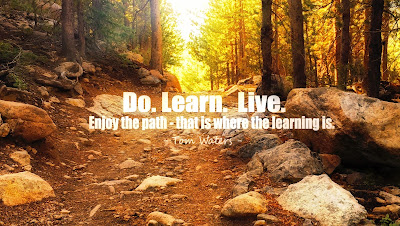Summarizing: A Powerful Thinking Strategy
Summarize what you read. Typical reading task, right? Yes. But it is so much more than that! Summarizing is a powerful thinking strategy that spread all academic areas and even work-related life skills. It is the ability to make decisions about information in efficient ways. More than ever, summarizing is a needed skill for the information age! Here are three ways that summarizing can benefit every classroom.
A Skill for Learning
Summarizing involves thinking about information. To summarize, we must rethink and reprocess what we've experienced. If we're reading, we must pause and retell what we read. Then we have to decide what was important about the text. These decisions are paraphrased into our own words and then logically ordered into a summary. That's complex! It's a skill that promotes learning. Maybe more importantly, it's a skill that increases our ability to learn...much like exercise. How can summarizing be used in a variety of settings?
- In a science class, students can be asked after each step of an investigation to paraphrase the steps in the process. At the end of the investigation, students can read their paraphrasing and create three sentences to summarize the scientific process.
- In a math class, a teacher can meet with small groups to review errors made on last week's test. After analyzing and discussing each error, students write down the "gist" of the mistake. After this 10-15 minute small group lesson, they read aloud what they wrote and discuss the common thread in all of the mistakes. This discussion is a summary of the students' learning.
A Strategy for Reading Comprehension
We usually think of summarizing in the context of a reading skill. But a...
skill is different than a strategy.
A skill is a part of the reading process such as decoding words, reading fluently, analyzing a text, etc... Skills make the whole process possible. They are the building blocks to developed reading ability. They are the staple of reading instruction. But the strategy should be embedded across content areas.
Strategies are bigger than skills. Seasoned readers don't just pick up a text and start going at it. They think about the text, what it is, why they are reading it, and how they are going to experience the text. These are strategies. They give the reader control of comprehension. Summarizing is one strategy a reader can use...if they have been appropriately taught how to summarize.
When readers use summarizing as a strategy, the reader will pause during reading and paraphrase the meaning of a segment of text. Then they will monitor whether they understood the meaning of the text. As the reader continues to read, they continue to create a summary of what they are reading in their mind. It's an ongoing thinking skill that is used to strategically understand texts. It is a strategy that can be taught to transitioning and fluent readers.
Summarizing for Differentiation
 The various sub-skills of summarizing can be used to differentiate the levels of complexity. These skills are recalling facts, retelling in logical order, and paraphrasing the key points. Simply, students can make choices about the degree to which they process information. They choose the level of challenge associated with learning any information. Let's say we're learning about the history of our local community. The teacher assigns a video or text. Students are given these choices:
The various sub-skills of summarizing can be used to differentiate the levels of complexity. These skills are recalling facts, retelling in logical order, and paraphrasing the key points. Simply, students can make choices about the degree to which they process information. They choose the level of challenge associated with learning any information. Let's say we're learning about the history of our local community. The teacher assigns a video or text. Students are given these choices:- Recall 10 important facts from the video or text. Write two sentences explaining which fact is the most important to you.
- Retell what you can remember. Make a list of the information in order from beginning to end.
- Paraphrase the key points. Write the most important information in a paragraph. Be sure to put it into your own words.
From these three choices, students can choose how they will process the information we are learning. Recalling is the simplest form of learning, but it still results in learning about the history of our local community. Students who struggle with more complex tasks will be able to do the recalling, and students with more experience summarizing information may choose to retell or paraphrase what they are learning. With time, students will be build confidence with these thinking skills and become stronger and more strategic thinkers!
Thinkers. That is a primary aim of education. Unleash the power of summarizing as a strategy to build thinkers in our students!
- 3 minute read on Questions are the Path to Critical Thinking
- 4 minute read on How to Teach Summarizing



Comments
Post a Comment
What are your thoughts?